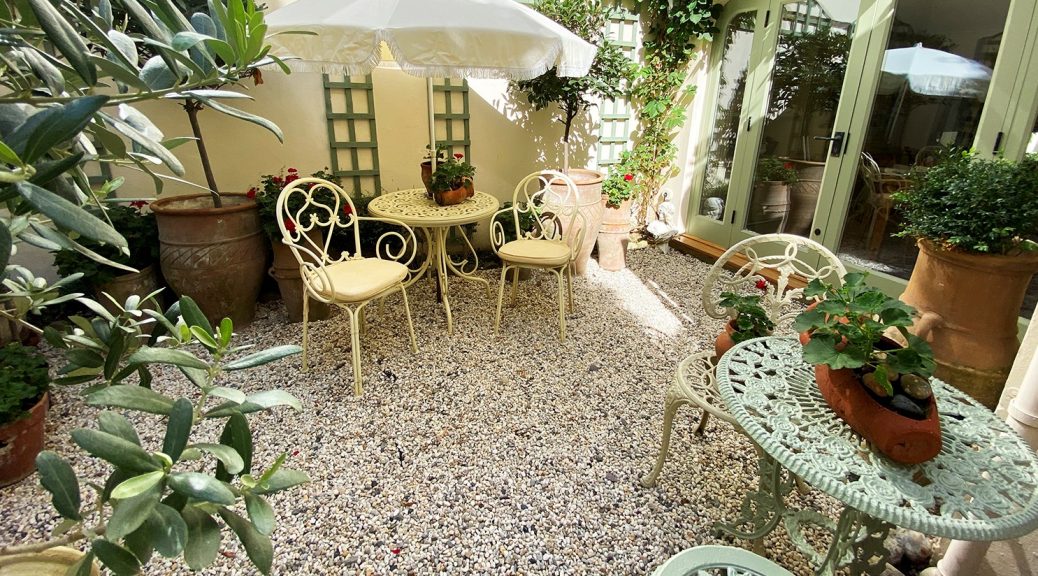
5 Simple Ways To Maintain A Gravel Garden
Gravel gardens can be a great option for areas of your outdoor space. They look fabulous and are generally easy to maintain. It is important to know how to maintain a gravel garden in order to keep your space looking pristine.
A Gravel garden is often chosen as an alternative to traditional turf gardens, as they require little effort all year round. In addition, you only need to water the plants, and weeds are less common so you can say goodbye to the old lawn mower!

Though gravel gardens are fairly simple to upkeep, it is important you know what you are doing in order to keep your garden looking in tip top shape. Once you know how to properly maintain a gravel garden, it is a relatively easy task to keep clean.
1. Control your weeds
Weed barrier fabric is a great option. It is a permeable material which can be used in a gravel garden to prevent weeds from growing up through the stone chippings. It will also protect your gravel from the soil below and will help to keep it cleaner for longer.

If you do have areas of (deliberate) plants in your gravel garden, you can simply snip holes in the weed fabric with scissors. The material is soft enough to do so.
Weed barrier fabric can easily be laid on the ground beneath the gravel. It is effective and easy option for weed defence as once laid, you will not need to change it and doesn’t need topping up.
If weed barrier fabric is not an option, you can use weed killer for any weeds or grass that grows within the gravel garden. There are plenty of weed killers that can be used, including organic products which will effectively remove unwanted weeds and grass.

2. Choose hard-wearing gravel
The right type of gravel is also key to having an easy to maintain gravel garden. Harder wearing chippings such as Basalt, Granite, Quartz or Flint stones won’t need topping up as regularly as softer chippings such as Limestone or Cotswold. Marble and Dolomite products are a semi soft material, so may discolour more easily in damper areas.
Therefore, if you do select a softer material then beware of areas in your garden that may get wetter, such as under trees or TV ariels. These sections of your garden may start to go a little green after a year or so.

Luckily it is very easy to clean the green off marble products such as our Polar Ice. You can use products like Wet and Forget. Watch our video below for tips and techniques.
We suggest using chippings sized between 12-20mm as they won’t get stuck in shoe treads and relocated around your garden and into your house! This size will also provide a more comfortable surface to walk over than larger rocks. If the area is going to be walked on, we also suggest selecting an angular gravel, as these chippings will lock together better and form a flatter surface.
It is best to avoid using small gravels or dashing sized 1- 11mm, as neighborhood cats may mistake your gravel garden for a litter box. Light colour gravel can also easily look discoloured so it may be better to stick to darker colours.
3. Rake the gravel into rows
To help keep your gravel garden looking sharp, you can rake the gravel into rows using a sturdy garden rake. This also helps prevent bald spots from occurring. This is easier to do with smaller chippings but can look very effective.

Rows of gravel can also be used to style a Japanese garden. Also if you are using smaller chippings, you may also be able to create patterns in your gravel for a truly original design.
Obviously we wouldn’t recommend this is the area is going to be regularly walked over. We don’t think the unique designs with hold up for very long!
4. Use a leaf blower for a quick dry clean
If you are lucky, your gravel garden will be located away from trees. However during the Autumn months especially, it is virtually impossible to stop leaves appearing on your graveled area. It is important to remove leaves quickly as they can cause discoloration to lighter gravels.
Picking up each leaf by hand can be a slow and painstaking way of removing them so we suggest investing in a leaf blower. These are quick and effective and will quickly clear out any leaves or debris that may have gotten into your garden. We do suggest using the leaf blower on a low setting, to avoid blowing away the gravel.
5. Water your plants on a regular basis
Don’t forget to water your plants on a regular basis. The best types of plants to have in your gravel garden include herbs, perennials, and ornamental grasses. These not only look gorgeous but have the most success growing in a gravel environment. Keeping your plants alive will also prevent any unsightly debris forming on your gravel.
If you do end up with mud and debris on your gravel, a quick hose down and a light scrub with a hard bristled brush should clean them up in no time.

Keeping plants in pots is another way to enjoy some plant life in your gravel garden. You can choose pots that blend seamlessly with the colour tones of your gravel. Alternatively choose plants and pots that provide an attractive contrast.
Your own gravel garden
The multitude of gravel colour options available means that you will find a decorative chipping to suit any garden or landscaping design. Therefore gravel gardens are a wonderful option for your outside space as are low maintenance and can make for a beautiful landscaped area.
For more help, watch our video on making and maintaining a gravel garden.